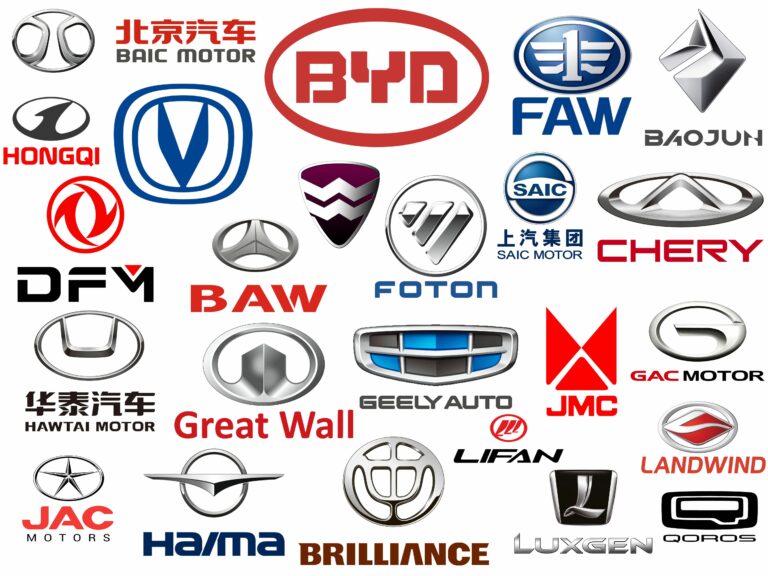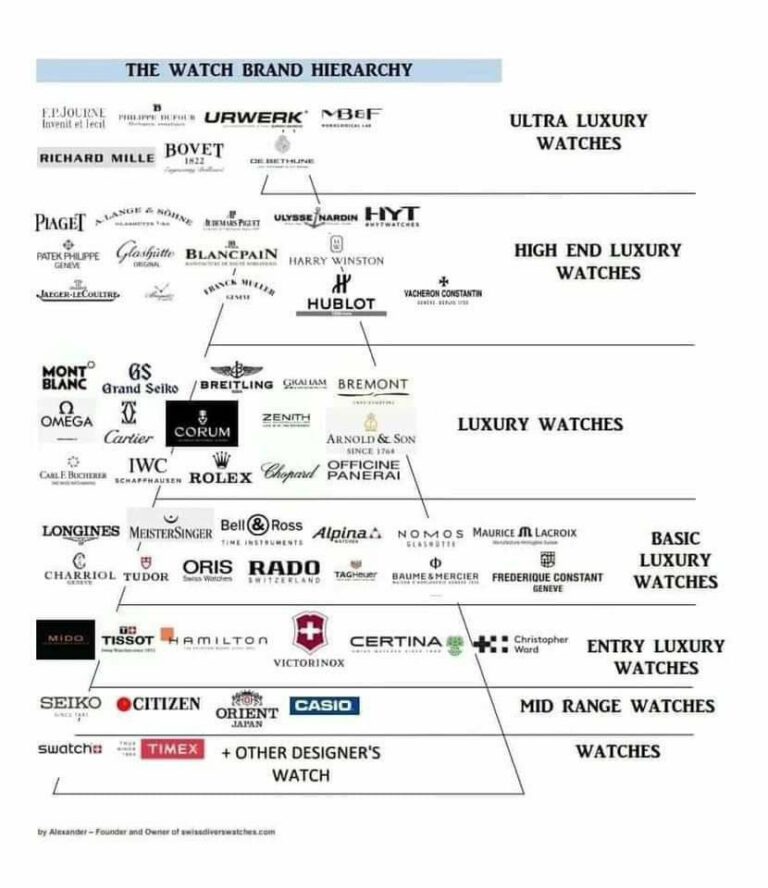What Is The Best Brand Of Car Amplifier? Unlocking Your Car Audio’s Full Potential
What Is The Best Brand Of Car Amplifier? Unlocking Your Car Audio’s Full Potential cars.truckstrend.com
The quest for the ultimate car audio experience often leads enthusiasts down a rabbit hole of components, each playing a critical role in sound reproduction. Among these, the car amplifier stands out as the unsung hero, transforming weak signals into the powerful, clean audio that drives your speakers and subwoofers. But when it comes to choosing an amplifier, a common question arises: "What is the best brand of car amplifier?"
The truth is, there isn’t a single, universally "best" brand. The ideal amplifier for you depends entirely on your specific needs, your existing audio components, your budget, and your listening preferences. Is your goal ear-shattering bass (SPL – Sound Pressure Level), pristine sound clarity (SQ – Sound Quality), or a balanced blend of both? This comprehensive guide will navigate the complex world of car amplifiers, helping you understand what makes a great amplifier and empowering you to choose the "best" one for your unique setup.
What Is The Best Brand Of Car Amplifier? Unlocking Your Car Audio’s Full Potential
Understanding the Heart of Your Car Audio System: The Amplifier’s Role
At its core, a car amplifier takes the low-level audio signal from your head unit (stereo) and boosts it to a much higher wattage, providing the necessary power to drive your speakers and subwoofers effectively. Without an amplifier, even the best speakers will sound weak, distorted, and lack dynamic range, as most factory head units and even aftermarket stereos simply don’t provide enough clean power. A dedicated amplifier ensures that your audio components receive adequate, clean power, resulting in clearer highs, richer mids, and deeper, more impactful bass.
Types of Amplifiers by Channels:
- Mono (1-Channel) Amplifiers: Designed specifically for subwoofers. They are optimized for low-frequency reproduction and typically offer high power output at low impedances.
- 2-Channel Amplifiers: Ideal for powering a pair of full-range speakers (e.g., front component speakers) or a single subwoofer (when bridged).
- 4-Channel Amplifiers: The most versatile, commonly used to power two pairs of full-range speakers (front and rear) or a front set of speakers and a bridged subwoofer.
- 5-Channel Amplifiers: An all-in-one solution, typically providing four channels for full-range speakers and a dedicated mono channel for a subwoofer. Great for simplifying wiring and saving space.

Amplifier Classes:
- Class AB: A traditional design, known for excellent sound quality, but less efficient and generates more heat.
- Class D: Highly efficient, compact, and produces less heat, making them ideal for high-power applications, especially subwoofers. Modern Class D amps have significantly improved sound quality, making them suitable for full-range applications too.

Key Factors in Choosing the Right Amplifier
Selecting an amplifier involves more than just looking at the brand name. Here are the critical specifications and features to consider:

Power Output (RMS vs. Peak): This is paramount. Always focus on RMS (Root Mean Square) power, which represents the continuous, usable power an amplifier can deliver. Peak power is a momentary burst and is largely irrelevant for real-world listening. Match the amplifier’s RMS output closely to the RMS power handling of your speakers and subwoofers.
- Too little power: Speakers will be underpowered, leading to distortion at higher volumes and potential damage.
- Too much power: Can damage speakers if not properly gain-matched, but a slightly overpowered amplifier that is properly gained can actually sound cleaner as it works less hard to reach desired volume levels.
-
Channels: Determine how many speakers and subwoofers you need to power. A 4-channel amp for your door speakers and a mono amp for your subwoofer is a popular combination.
-
Impedance Stability (Ohms): Speakers and subwoofers have an impedance rating (e.g., 2-ohm, 4-ohm). Ensure your amplifier is stable at the impedance your speakers present. Running an amplifier below its stable impedance can cause it to overheat and fail.
-
Frequency Response: This indicates the range of frequencies the amplifier can reproduce. A wider range (e.g., 20Hz-20kHz) is generally better for full-range clarity.
-
Signal-to-Noise Ratio (SNR): Measured in decibels (dB), a higher SNR (e.g., >90dB) indicates less background hiss or noise relative to the audio signal, resulting in cleaner sound.
-
Total Harmonic Distortion (THD): A lower THD percentage (<0.1%) means the amplifier introduces less unwanted distortion into the audio signal, leading to more accurate sound reproduction.
-
Crossover Networks (HPF/LPF):
- High-Pass Filter (HPF): Sends only frequencies above a certain point to your full-range speakers, protecting them from damaging low bass frequencies.
- Low-Pass Filter (LPF): Sends only frequencies below a certain point to your subwoofer, ensuring it only plays bass notes.
- These are crucial for shaping sound and protecting your components.
-
Build Quality and Reliability: Look for robust construction, efficient heat sinks, and quality internal components. A well-built amplifier will last longer and perform more consistently.
-
Connectivity and Features: Look for RCA inputs for clean signal transfer, high-level inputs if connecting to a factory stereo without RCA outputs, remote bass control knob for subwoofers, and protection circuitry.
Top Contenders: Brands Known for Amplifier Excellence
While there’s no single "best," certain brands consistently earn high praise for their performance, reliability, and innovation across different price points and use cases.
1. High-End / Audiophile Grade (Focus on Sound Quality & Premium Features):
- Audison: An Italian brand renowned for its incredibly clean, accurate sound reproduction and advanced digital signal processing (DSP) capabilities. Often considered the pinnacle for sound quality enthusiasts.
- JL Audio: A long-standing leader, particularly known for its powerful, reliable Class D mono amplifiers (like the HD and RD series) and multi-channel amps that deliver exceptional sound quality and power.
- McIntosh: While more known for home audio, their car amplifiers are legendary for their warm, rich sound and iconic blue power meters. Extremely high price point, but unparalleled sonic signature.
2. Premium Performance / Popular Choice (Excellent Balance of Power, Features & Value):
- Rockford Fosgate: A powerhouse in car audio, famous for its robust build quality, high power output, and signature "punch" series amps. Excellent for both SPL and a balanced sound.
- Alpine: Consistently delivers reliable, high-performance amplifiers. Their V-Power and X-Series amps offer great power and sound quality, often with compact footprints.
- Kicker: Known for their powerful, hard-hitting amplifiers, particularly popular for driving subwoofers. Their CX and KX series offer great bang for the buck.
- Pioneer: A household name in car audio, offering a wide range of amplifiers from budget-friendly options to more powerful, feature-rich models. Good all-rounders.
- Kenwood: Another reliable brand providing a diverse lineup of amplifiers, often praised for their competitive pricing and solid performance.
3. Value / Budget-Friendly (Entry-Level Performance, Good for Upgrades):
- Skar Audio: Has gained popularity for offering high-power, budget-friendly amplifiers, especially for bass enthusiasts. While not always top-tier in sound quality, they deliver significant output for the price.
- BOSS Audio Systems / Planet Audio: These brands typically offer very affordable amplifiers. While they can be a significant upgrade over factory power, be wary of inflated "peak power" ratings and manage expectations regarding sound fidelity and long-term reliability compared to premium brands.
Matching the Amplifier to Your System
The "best" amplifier is one that perfectly complements your existing or planned car audio components:
- Speakers: Check your speakers’ RMS power handling and impedance. Your amplifier’s RMS output should ideally be within 75-125% of your speakers’ RMS rating.
- Subwoofers: Crucial to match the subwoofer’s RMS power handling and its impedance configuration (e.g., single 4-ohm, dual 2-ohm). Ensure your mono amplifier can deliver its rated power at the subwoofer’s final impedance load.
- Head Unit: If your head unit has RCA pre-outs, use them for the cleanest signal. If not, many amplifiers have high-level (speaker level) inputs, but an LOC (Line Output Converter) might still be recommended for better signal integrity.
- Vehicle’s Electrical System: For high-power amplifiers (typically 1000W RMS or more), consider upgrading your vehicle’s wiring (Big 3 upgrade), and potentially your battery or alternator, to prevent dimming lights and ensure stable power delivery.
Installation and Tuning Tips
Even the best amplifier won’t sound good if installed or tuned incorrectly.
- Proper Wiring: Use appropriate gauge power and ground wires (as specified by the amplifier’s manual), always include an in-line fuse close to the battery, and use high-quality RCA cables for signal.
- Secure Mounting & Ventilation: Mount the amplifier in a cool, dry place with adequate airflow to prevent overheating. Secure it firmly to prevent movement.
- Gain Setting: This is critical! The gain knob is not a volume control. It matches the amplifier’s input sensitivity to your head unit’s output voltage. Set it too high, and you’ll introduce distortion (clipping), which can damage speakers. Use a digital multimeter or an oscilloscope for accurate gain setting.
- Crossover Adjustment: Properly set the HPF for your full-range speakers (e.g., 80Hz-100Hz) and the LPF for your subwoofer (e.g., 60Hz-80Hz) to ensure each component plays only the frequencies it’s designed for. This improves clarity and protects your speakers.
Common Challenges and Solutions
- Amplifier Overheating: Usually caused by insufficient ventilation, impedance mismatch (running amp below its stable ohm rating), or improper gain setting. Solution: Check wiring, impedance, ventilation, and reset gain.
- Noise/Hiss: Can be due to ground loops, poor quality RCA cables, improper grounding, or routing signal wires too close to power wires. Solution: Check ground points, use shielded RCAs, re-route cables.
- Distortion/Clipping: Most often from improper gain setting, but also from underpowering speakers or a weak electrical system. Solution: Re-set gain correctly, check wiring, consider electrical upgrades.
- No Sound: Check power, ground, remote turn-on, RCA connections, and fuses.
Price Table: A Glimpse into Amplifier Costs (Approximate Ranges)
Prices for car amplifiers vary wildly based on brand, power output, features, and class. The table below provides approximate retail price ranges for common configurations and brands. These are subject to change and depend heavily on specific models and sales.
| Brand | Typical Use Case | Key Features/Class | Approximate Price Range (USD) |
|---|---|---|---|
| JL Audio | Premium SQ, Powerful Bass | High-efficiency Class D, Advanced DSP, Compact | $300 – $1500+ |
| Audison | Ultimate SQ, Audiophile | Ultra-clean Class AB/D, Integrated DSP, Premium Build | $500 – $2500+ |
| Rockford Fosgate | High Power, Balanced SQ/SPL | Class D/AB, Punch EQ, Fan Cooled | $200 – $1000 |
| Alpine | Reliable Performance, Compact | Class D, Good SQ, Remote Bass Knob | $180 – $800 |
| Kicker | Strong Bass, Value for Power | Class D, Compact, Bass Boost | $150 – $700 |
| Pioneer | Versatile, Good All-Rounder | Class D/AB, Various Channel Options | $100 – $500 |
| Kenwood | Solid Performance, Value | Class D/AB, Built-in Crossovers | $100 – $450 |
| Skar Audio | Budget SPL, High Wattage | Class D, High Power Output | $100 – $400 |
| BOSS Audio / Planet Audio | Entry-Level Upgrade, Budget Conscious | Class A/B or D (basic), High Peak Ratings | $50 – $250 |
Note: Prices are for individual amplifiers and do not include installation, wiring kits, or other components.
Frequently Asked Questions (FAQ)
Q: Do I really need an amplifier if my head unit has built-in power?
A: While your head unit provides some power, it’s typically very low (around 15-20 watts RMS per channel) and often generates distortion at higher volumes. A dedicated amplifier provides significantly more clean power, leading to clearer sound, more dynamic range, and the ability to truly drive aftermarket speakers and subwoofers.
Q: What’s the difference between RMS and Peak power?
A: RMS (Root Mean Square) is the continuous, usable power an amplifier can deliver consistently without distortion. Peak power is the maximum power it can produce for a very brief moment. Always base your component matching on RMS ratings for realistic performance.
Q: Can I use a car amplifier in my home?
A: Technically yes, but it requires a specialized DC power supply capable of providing the necessary voltage and amperage, as car amplifiers run on 12V DC. It’s generally more practical and cost-effective to use an amplifier designed for home audio.
Q: How do I know what size amplifier I need?
A: Match the amplifier’s RMS power output to the RMS power handling of your speakers and subwoofers. For example, if your speakers are rated for 75W RMS, look for an amplifier that delivers around 75W-100W RMS per channel.
Q: What is amplifier "gain" and how should I set it?
A: Gain matches the amplifier’s input sensitivity to your head unit’s output voltage. It’s NOT a volume knob. Setting it correctly prevents distortion (clipping). The safest and most accurate way to set gain is by using a digital multimeter or an oscilloscope, not by ear.
Q: Why does my amplifier get hot?
A: Some heat is normal, especially for Class AB amplifiers. Excessive heat can indicate: insufficient ventilation, impedance mismatch (amp running at too low an ohm load), improper gain setting, or a weak electrical system. Check these factors.
Q: Is a higher price always better for car amplifiers?
A: Generally, yes, higher-priced amplifiers from reputable brands often offer superior build quality, more stable power delivery, lower distortion, better features, and advanced circuitry for cleaner sound. However, diminishing returns apply, and a mid-range amplifier can still provide excellent performance for most listeners. The "best" value often lies in the mid-to-high range of reputable brands.
Conclusion: Your Best Amplifier Awaits
The journey to finding "the best brand of car amplifier" isn’t about identifying a single champion, but rather understanding your unique audio aspirations and the technical specifications that will help you achieve them. Whether you prioritize pristine sound quality, earth-shaking bass, or a reliable daily driver upgrade, the perfect amplifier is out there.
By focusing on RMS power, proper impedance matching, essential features like crossovers, and investing in a reputable brand within your budget, you’ll be well on your way to transforming your car’s audio system from mundane to magnificent. Remember, the amplifier is the muscle behind your music; choose wisely, and prepare to truly hear your favorite tracks like never before.






